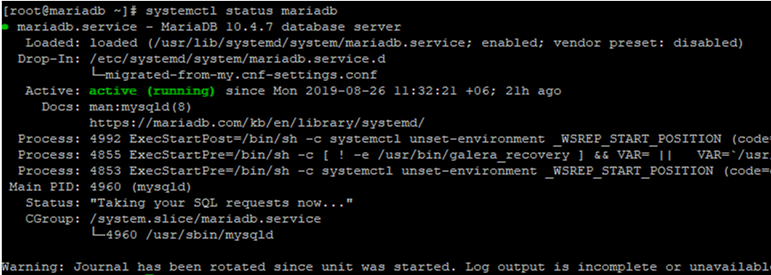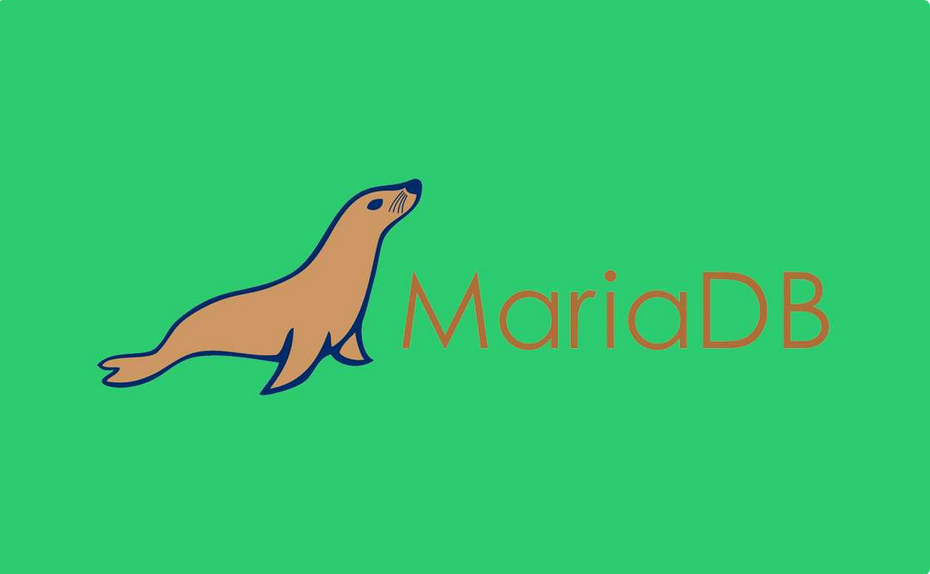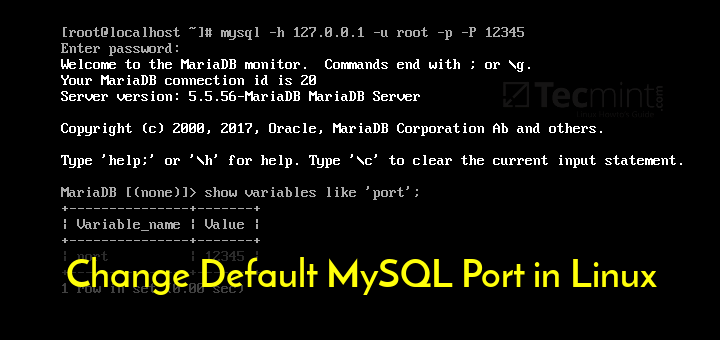
- #Centos 7 install mysql instead of mariadb password#
- #Centos 7 install mysql instead of mariadb download#
CentOS 7 installs MariaDB instead of MySQL by default, and MySQL-related packages have been removed from the yum server. 1511 (Core) and is installed on the desktop. The operating system is 64-bit CentOS Linux release 7.2. There are Help links on any Mattermost page that link to documentation, and please stop by our LiveChat if you have any questions. This article was written on May 20, 2017, using MySQL-5. On the Mattermost webpage, you'll create the first account, and then you can jump right into chatting by creating a team or go to the System Console to change more options in Mattermost. chmod 664 /etc/systemd/system/rviceĪssuming no errors come out of the systemctl start mattermost, you can (re) load the Mattermost webpage on your server at HTTP://\:8065

PIDFile=/var/spool/mattermost/pid/master.pid Nano /etc/systemd/system/rviceĪnd paste in (right-click in PuTTY) Īfter=syslog.target network.target rvice

(ctrl-c to exit the running mattermost and return to the root command line) Step 6: Turn Mattermost into a service that runs when the server starts From there, you can create your administrator account and start setting up channels, groups, etc. It will take several seconds to start up the first time, as it populates the database, but you should be able to load in a browser to make sure it worked. To run Mattermost as the mattermost user: cd /opt/mattermost "DataSource": the database name is set between the / and? Above, the default is mattermost_test, but the database created in step 2 is just 'mattermost,' so remove the _test in the config lineĬtrl-x to exit nano, y to say yes to saving, then enter actually to exit.
#Centos 7 install mysql instead of mariadb password#
The "DataSource" line (much further down in the file, use ctrl-w in nano to search) needs to be edited to have the mmuser database password set in step 2 and point to the right database name. The "SiteURL" value near the top should be changed to the hostname of your VPS or a domain pointing to it, e.g., "SiteURL": "" Step 4: Edit the configuration file to match the database settings above. Step 3: Add a user for Mattermost to run as useradd -system -user-group mattermostĬhown -R mattermost:mattermost /opt/mattermost > GRANT ALL PRIVILEGES on mattermost.* TO FLUSH PRIVILEGES > CREATE USER IDENTIFIED BY "YourMatterMostDBPassword" Step 2: Add the mattermost database mysql -u root
#Centos 7 install mysql instead of mariadb download#
You can find the latest Linux Server download for Mattermost on - 5.24.2 is the most recent at the time of writing and will be used. Step 1: Download Mattermost and extract it Socket=/var/lib/mysql/mysql.sock Installing Mattermost Step 3: Set the root password for MariaDB mysqlĪLTER USER IDENTIFIED BY 'ThisIsAPassword' Īnd you'll want to save this passsword into /root/.my.cnf for easier mysql command line access: Step 2: Install and start MariaDB yum -y install mysqltuner mariadb-server mariadb expect Step 1: Download and execute the 'mariadb repo setup' script from : wget To install the latest MariaDB, we'll need to pull from the MariaDB site instead of the normal CentOS 7 repositories.

The default version of MariaDB in CentOS 7 is equivalent to MySQL 5.5, and Mattermost requires 5.6 or higher. Start by connecting to your Linux VPS or Dedicated server over SSH. Still, it does require extensive use of the command line for both Linux and MySQL. Installing Mattermost on a Hostwinds Linux VPS or Dedicated server running CentOS 7 is a fairly straightforward process. To start using the MariaDB service and enable it to run on boot use the commands: systemctl start mariadb systemstl enable mariadbģ.Mattermost is a popular chat and collaboration tool, similar to Slack or Discord, but hosted on a server you control. Press Y to confirm installation and hit Enter.Ģ. Open the terminal and type in the following command to download and install the MariaDB package: yum install mariadb-server Although the repository does not offer the latest stable version, MariaDB 5.5 is a stable release.ġ. The simplest way to install MariaDB is from the CentOS repository.

Option 1: Install MariaDB 5.5 on CentOS 7 from Local Repository The second option includes the latest stable version available but requires additional configuration steps. However, this repository does not provide the newest version of MariaDB available. The first is with the CentOS local repository. There are two (2) options to install MariaDB on your CentOS system. Access to the root user or a user with sudo privilegesĢ Options for Installing MariaDB on CentOS.The yum package manager, included by default.


 0 kommentar(er)
0 kommentar(er)
